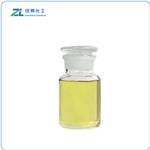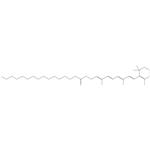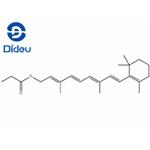Usage levels of retinyl propionate in skin care range from 0.1–0.4%. It is often paired with niacinamide because this B vitamin enhances the stability and bioavailability of retinyl propionate.
Retinyl propionate (RP) is a less well-known, but pretty interesting member of the retinoids, aka the "royal family of skincare".Similar to retinyl palmitate, retinyl Propionate is also a retinol ester with retinol and propionic acid being attached together.
Retinyl Propionate is a Vitamin A ester derivative. Retinyl Propionate is a hypermitotic agent that is used in cosmetic formulations.This compound contains an unknown cis isomer.
Retinyl propionate, a derivative of retinol, is a fatty acid that is used as a sample preparation for copper-complexed collagen[1]. In metabolic processes, retinyl propionate is metabolized primarily into retinol (ROL) in the viable epidermis and dermis whereas ROL is esterified into retinyl palmitate (RPalm) and metabolized into the inactive retinoid 14‐hydroxy‐4,14‐retro‐retinol (14‐HRR)[2]. Retinol and its derivatives effectively intervene in the skin aging process. The matrix effect of retinyl propionate can be seen in the skin cells, bone cells, and cartilage tissue. Retinyl propionate has been shown to increase calcium pantothenate transport rates in human serum and also has a film-forming polymer effect.
Side effects of using retinol may include:
redness, irritation, burning, itching, dry skin, flaking and peeling of the skin, increased sensitivity to the sun, and skin cancer.
Structure and conformation
Retinyl propionate is closest in molecular size to pure retinoic acid with just three additional carbons. Vitamin A palmitate has an additional 16 carbons, making it too large to reach the dermis effectively.
[1] Wang Q, et al. The synergistic effect of retinyl propionate and hydroxypinacolone retinoate on skin aging. Journal of Cosmetic Dermatology, 2023; 22: 2040-2049.
[2] Yang Y, et al. Hydrophobically modified inulin based nanoemulsions for enhanced stability and transdermal delivery of retinyl propionate. Colloids and Surfaces A: Physicochemical and Engineering Aspects, 2022; 653: 129883.



